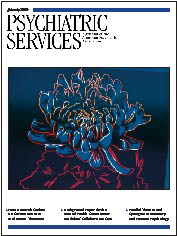The Pathway to Meeting Need for Mental Health Services in Sweden
Abstract
OBJECTIVE: Mental health problems are often underrecognized and undertreated. Knowledge of the characteristics associated with the pathway to having a need for mental health care by appropriate treatment (met need) can help to correct this deficit. This study used data from a population-based study to determine the characteristics of persons whose needs were meetable, who were aware of the need for mental health care, who requested care, and whose needs were met. METHODS: A total of 10,443 randomly selected persons in Stockholm, Sweden, aged 20 to 64 years answered a survey that included questions about mental health problems. A subsample of 1,093 persons was then interviewed by psychiatrists, who determined whether the respondents had a psychiatric disorder according to DSM-IV criteria. The interview also assessed need for care, service use, and whether an evidence-based treatment was available for the mental health problem. RESULTS: Among the 1,093 persons interviewed 462 were found to have a mental health problem for which psychiatric treatment was available (meetable need for care). Among the 462 persons with a meetable need for care, 70 percent fulfilled the DSM-IV diagnostic criteria for having a psychiatric disorder; the rest had various symptoms, mostly depressive. Among the persons with a meetable need for care, 84 percent were aware of this need, 37 percent had requested care, and 17 percent had their needs met by evidence-based treatment. Persons whose needs were met tended to be female, have more education, and have good social support. Also, they were less likely to report that feelings of shame would prevent them from requesting psychiatric care. CONCLUSIONS: The characteristics associated with unmet need suggest that strategies that focus on specific groups (for example, males and persons with less education) could increase the percentage of persons whose needs are met.



